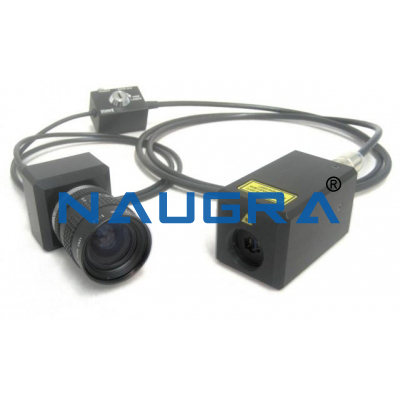- Workshop Tools and Workshop Machines India: buy@naugra.com

Laser PIV System .
Specification of Laser PIV System for Science Lab Equipment Laboratory Instruments Manufacturers, Engineering Lab Equipments Manufacturers
Laser
Solid-state air- cooled 200 mW, 660 nm laser diode (Class 3b).
Standard optics produce a c. 3 mm thick, 45° light sheet (c. 200 mm wide at 250 mm).
Interchangeable 20° light sheet optic available (item H41-3).
Pulse separation (t) of between 100 µs - 5 s (in steps of 10 µs).
Pulse width of between 10 µs - 32 ms (in steps of 10 µs).
Camera
Super-sensitive VGA CMOS sensor:
640 — 480, 6.0 µm pixels (1/3Â format);
~50% quantum efficiency at 660 nm;
75 - 110 dB dynamic range;
4.8 V/lux·sec sensitivity.
Trigger input enables image pair acquisition to be synchronised with external events.
Accepts standard CS- or C-mount lenses (12.5mm f/1.4 lens supplied).
Camera exposure can be linked to the lasers pulsing, thereby enabling operation in a lit room.
Software Processing
Data refresh and recording rate up to 16Hz (dependent on the computer speed, the selected acquisition and PIV analysis parameters and the recording taking place)
Real-time, or offline, 2-component vector calculation.
Single pass or adaptive multi-pass cross-correlation with 8, 12, 16, 24, 32 or 64 pixel window sizes.
0% or 50% window overlap (i.e. maps of up to 19,000 vectors).
Optional vector interpolation and filtering
Based On:
User-supplied velocity limits;
RMS of neighbouring vectors values.
Calculation of the following derived scalars:
Vector angle and magnitude;
Vorticity and swirl;
Time-averaged mean velocity;
RMS and turbulence intensity.
Where applicable, vector component and statistical sample number are user-defined
